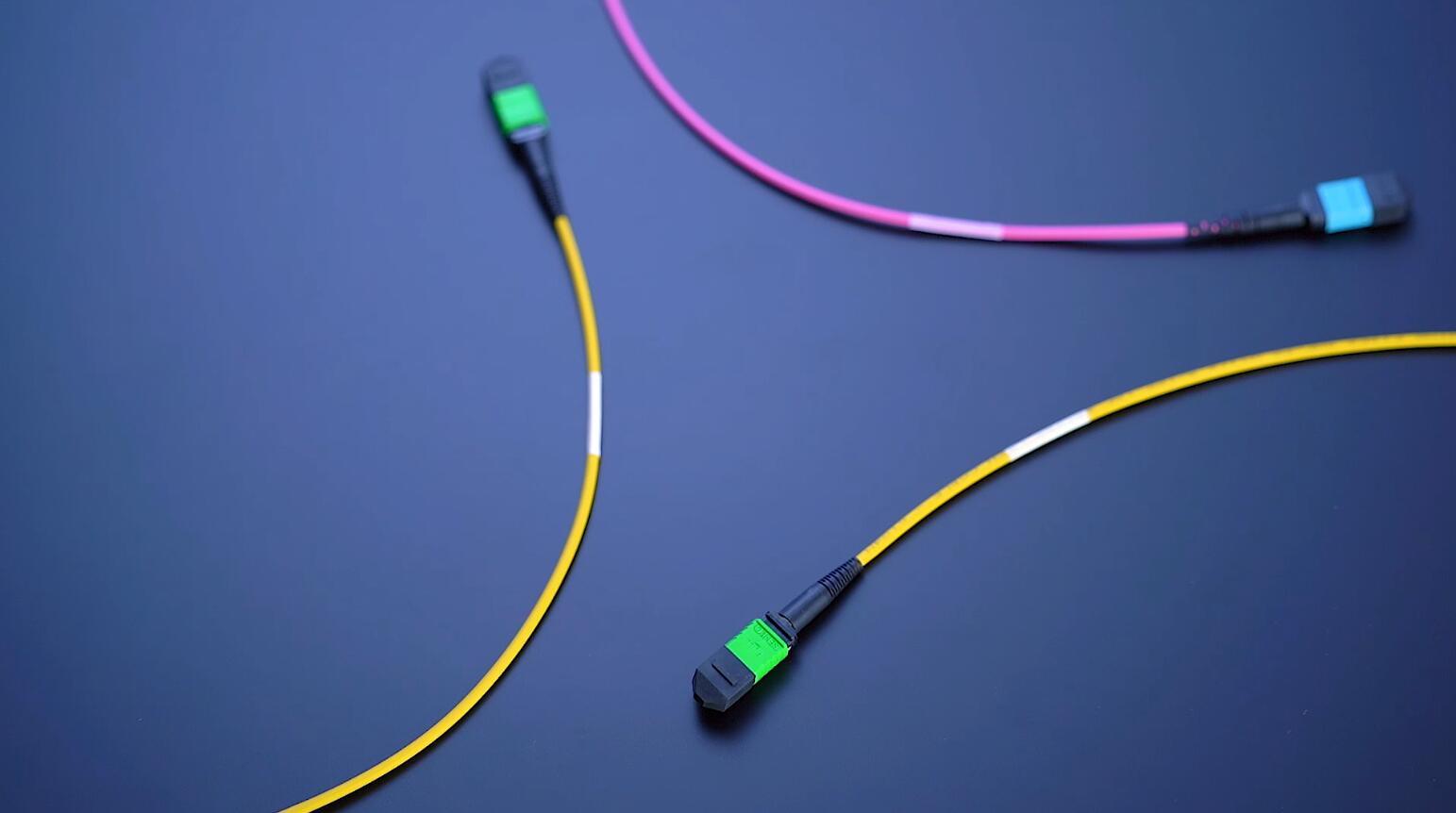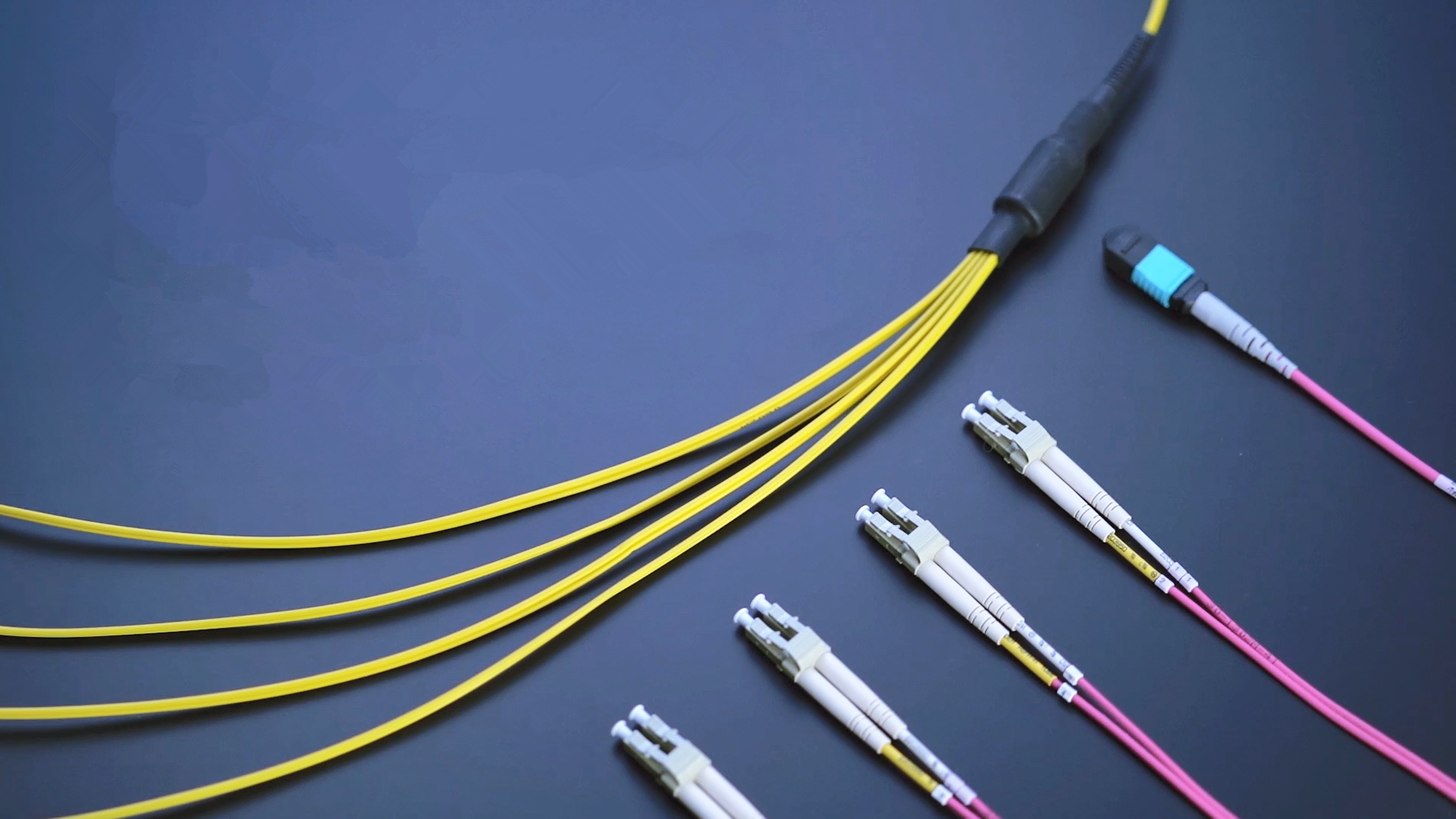As the data center expands, the traditional fiber optic cables can hardly meet the high requirements for networking, as they not only occupy a large room but also make it more difficult to manage cables. In contrast, MTP cable and MPO cable provide multi-fiber connectivity in one connector to support higher bandwidth and higher density applications, thus becoming popular. Generally, MTP/MPO cables are classified into three types: trunk cable, harness cable, and conversion cable. See what they are and their applications.
Common MTP/MPO Cable Types
MTP/MPO Trunk Cable
MTP/MPO trunk cable is a cable with two MPO or MTP connectors at both ends, with nothing different from ordinary patch cables seen from outside. However, the truth is that the cable usually accommodates 12, 24, 48, and even 72 fibers, and the ends are terminated with 12-fiber or 24-fiber MTP/MPO connectors according to the customer’s choice. FS MTP/MPO trunk cables are designed for high-density applications which offer excellent benefits in terms of on-site installation time and space saving. They are available in multiple lengths and single mode, multimode OM1, OM2, OM3, or OM4 with LSZH or PVC Jackets. With BIF, FS MTP and MPO cables are designed for improved bend performance in reduced-radius applications such as residential or office environments which have less bend sensitivity.
MTP/MPO Harness Cable
MTP/MPO harness cable is also known as fanout cable or breakout cable as it has a single MTP connector on one end and the other end it breaks out into 6 or 12 connectors (LC, SC, ST, etc.). As one fiber patch cord contains two fibers for receiving and transmitting, an 8-fiber MTP-LC harness cable, for example, has 4 LC connectors and an MTP connector at either end. Similarly, a 12-fiber MTP-LC harness cable has 6 LC connectors and an MTP connector. MTP/MPO harness cable is usually deployed for 40G to 10G transmission and 100G to 25G transmission.
MTP/MPO Conversion Cable
The MTP/MPO conversion cable has the same fanout design as the MTP/MPO harness cable, but it is terminated with MTP/MPO connectors on both ends. However, the MTP connectors on each end are different in fiber counts and types, which can provide more possibilities for the existing 24-fiber cabling system. It eliminates the wasted fiber, and therefore can largely increase the capacity of the existing 12-fiber and 24-fiber MTP network.
How to Deploy MTP/MPO Cables in 10G/40G/100G Connections?
Following the MTP/MPO fiber cables are the MTP/MPO cassettes, MTP/MPO fiber adapter panels, and MTP/MPO breakout panels. Here are some typical applications of MTP/MPO fiber cables in 10G, 40G, and 100G connections.
10G-10G Connection
In the following two scenarios, two MTP/MPO cassettes installed in the fiber enclosures are connected by MTP/MPO trunk cables, making the core of the cabling simpler. The front panel of the cassettes is connected upwards to the server and downwards to 10G ports of FS S5800-48F4S via OM4 fiber optic cable and 10G transceiver.
40G-10G Connection
In this scenario, a 40G QSFP+ port on the FS S5850 48S6Q switch is split up into 4 10G channels. An 8-fiber MTP-LC harness cable connects the 40G side with its MTP connector and the four LC connectors link with the 10G side.
40G-40G Connection
As shown below, a 12-fiber MTP trunk cable is used to connect two 40G optical transceivers to realize the 40G to 40G connection between the two switches. The connection method can also be applied to a 100G-100G connection.

120G to 3x40G Connection
In this figure, an MTP/MPO conversion cable connects a CXP 120G SR12 and three 40G QSFP+ SR4 fiber optic transceiver modules to realize the migration from 120G to 40G networking.
Conclusion
High-performance, high-density MTP cable, and MPO cable solutions can swap up to 12 traditional fiber connectors with one single small form factor connector, reducing installation time and labor costs. They are suitable for a variety of applications including data centers, telecommunications, broadcast communication, and server rooms. FS strives to provide you with the best products at reasonable prices and the best service.
Related articles: Understanding Polarity in MPO System
Type A MTP Cassette and Type B MTP Cassette: When and Where to Use?










